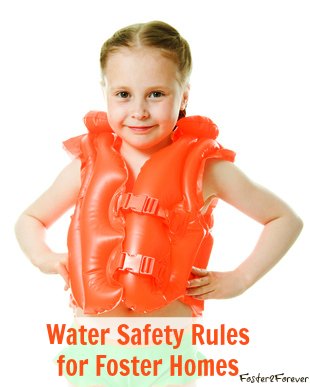This has been the hottest summer that I can remember! Here in Texas, we have had 100+ temperatures for over 40 days!!! 40 days!!!
Tomorrow, the forecast is for 110 degrees!!! 110 degrees!!! It is impossible to stay cool if you are outside in this heat. We had purchased a blow-up wading pool for the kids (and us) for some family water fun; however….
We received an email from our foster home worker to “gently” remind us of the requirements for above ground pools as a licensed foster home:
If this summer heat is making you want to go out and buy an above ground pool, please remember to inform me before you fill it with water, so I can make a home visit to ensure all requirements have been met. Above ground pools need to comply with Minimum Standards and Policy, which are:
7251 Water Safety CPS April 2002
When a foster and/or adoptive parent family home is verified or approved, CPS staff must ensure that the home is in compliance with the following water safety requirements:
1. Children under age five or children with physical or cognitive impairments must be supervised at all times in a bathtub;
2. Adults or persons certified in water safety must supervise children around any large bodies of water at all times. This includes swimming and wading pools, hot tubs, stock ponds, creeks, rivers, lakes, oceans, or bays;
3. Foster and/or adoptive parents who have a pool or body of water on their property must successfully complete a water safety course;
4. Life jackets must be worn by all children and youth who engage in boating activities and by children who are in more than two feet of water and do not know how to swim;
5. Hot tubs must be securely covered when not being used;
6. Swimming pools must have physical barriers designed to limit access. Barriers include fences or walls, and pool safety covers.
· Fences and walls around pools must be at least four feet high and well-constructed (the Red Cross recommends vertical fencing, and openings in the fence should be no more than four inches wide); these barriers must be installed completely around the pool.
· Fence gates must be self-closing, self-latching, and locked when the pool is not in use.
· If the house forms one side of the barrier for the pool, then doors leading from the house to the pool must be protected with alarms that produce an audible sound when a door is opened.
· Applicable doors and windows must also have a lock installed that cannot be unlocked by a child under the age of five without assistance.
· A child safety pool cover that can be placed over the water area may be used as an alternative barrier for fences or walls. However, pool covers are only required when there is no fence or wall surrounding the pool. Pool covers must be completely removed prior to pool use;
7. Exterior ladders (not in-pool ladders) on above-ground pools must be removed and gates secured and locked when the pool is not in use;
8. Furniture or large materials must never be left near the pool’s fence so children may not use them to scale the fence;
9. Toys must be kept away from a pool that is not in use (toys can attract young children into the pool);
10. A telephone and basic lifesaving equipment must always be kept by the pool (for example, a pole, rope, and personal floatation devices);
11. Foster family group homes must comply with additional standards developed by DFPS’s Licensing Division (see the Minimum Standards for Child-Placing Agencies, Appendix G, Foster Group Homes, Standards G-3100.3 and G‑3100.4); and
12. Foster and/or adoptive homes must also comply with all local and county ordinances.
Needless to say, we didn’t fill it.




